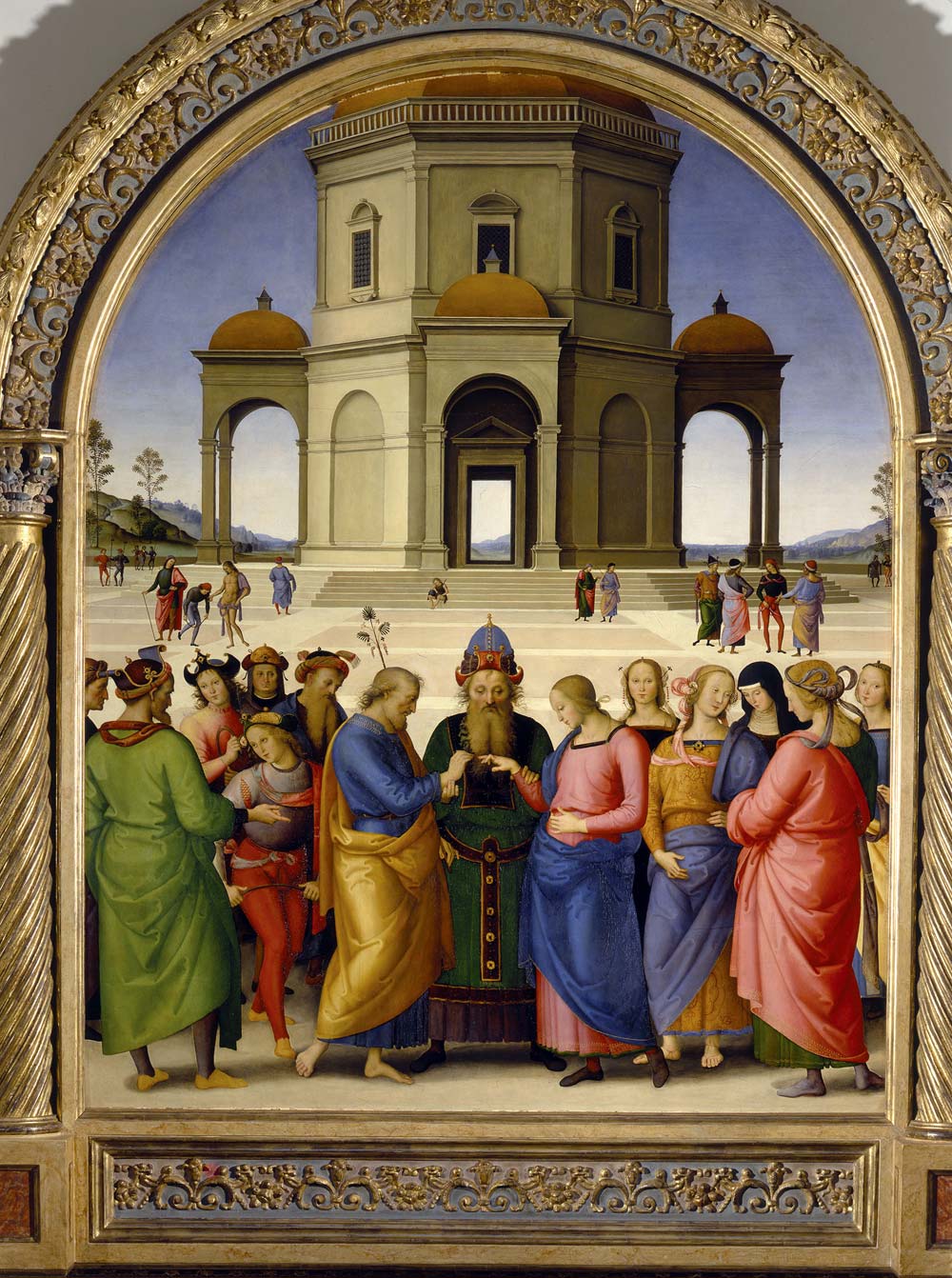For the first time in two hundred years a masterpiece of our Renaissance that was taken away during the Napoleonic era will return to its city: it is the Marriage of the Virgin, a masterpiece by Perugino (Pietro Vannucci; Città della Pieve, c. 1450- Fontignano, 1523) preserved at the Musée des Beaux-Arts in Caen , France, which will make its temporary return to Perugia, to the National Gallery of Umbria, on the occasion of the exhibition The Best Master of Italy. Perugino in his time, curated by Marco Pierini and Veruska Picchiarelli. The exhibition will represent the culmination of celebrations for the 500th anniversary of the artist’s death. Among the goals of the exhibition is to update the critical judgment on one of the most influential artists of the generation, too often branded simply as the “master of Raphael” or as a discontinuous artist (so much so that attention on his work has focused mainly on the middle years of his maturity), but in fact an artist among the most refined of his time.
The display of The Marriage of the Virgin, which can be seen at the exhibition in Sala Podiani at the National Gallery of Umbria from March 4 to June 11, is one of the highlights of the show. The work is one of the masterpieces in the historical collection of the Musée des Beaux-Arts in Caen. It was seized in 1798 by Napoleon Bonaparte’s French armies who took it away from Perugia Cathedral where it had hung since its creation in 1504. The work had a special connection to Perugia Cathedral, since this is where what tradition says is theVirgin’s wedding ring is kept. So the same painting in the work by Perugino.

The work depicts the marriage of Joseph and the Virgin Mary. The high priest Zechariah unites them in marriage against the backdrop of the Temple in Jerusalem, depicted as an ideal architecture in the background: an octagonal building pierced by a rectangle of light and allowing glimpses of the landscape in the distance symbolizes the theological horizon to which the two protagonists are promised, and also marks the vanishing point, the point toward which all the lines of the painting converge, drawn geometrically according to the rules of Euclidean (or mathematical) perspective so prized by Renaissance artists to create a physical sensation. space.
Surrounding the two protagonists moves a series of characters caught in various poses (famous is the one who, disappointed at not being chosen, in a sign of annoyance tries to break the rod by bending it over his leg). Perugino’s The Marriage of the Virgin has always been at the center of a kind of ideal tussle with the counterpart work of Raphael, Perugino’s pupil, who also painted in 1504 his Sposalizio now in the Pinacoteca di Brera in Milan (it was commissioned for the chapel of St. Joseph in the church of San Francesco in Città di Castello), when he was just 21 years old while the master was more than 50. Raphael’s work also left its home, Città di Castello, in 1798, when the municipality donated it (in a much-discussed deed) to Napoleon’s General Giuseppe Lechi: after several steps, the painting arrived at the Brera Academy in 1809.
“It is the ’most important religious work made for his adopted city,” art historian Veruska Picchiarelli, curator of the exhibition, explained to Ansa. “Perugino is one of the best draughtsmen in the entire history of art, he was the noble father of classicism. The elements of his language are a personal achievement that tends to ’harmony and balance. After Giotto he is the first painter who allows Italy to speak from north to south a ’single language.”
 |
| The Marriage of the Virgin, Perugino's masterpiece, temporarily returns to Italy |
Warning: the translation into English of the original Italian article was created using automatic tools. We undertake to review all articles, but we do not guarantee the total absence of inaccuracies in the translation due to the program. You can find the original by clicking on the ITA button. If you find any mistake,please contact us.